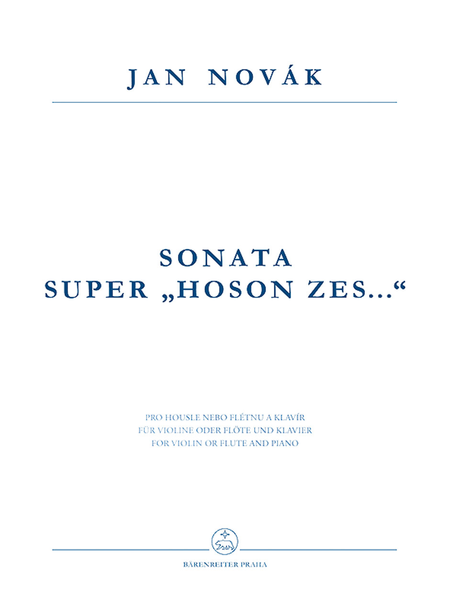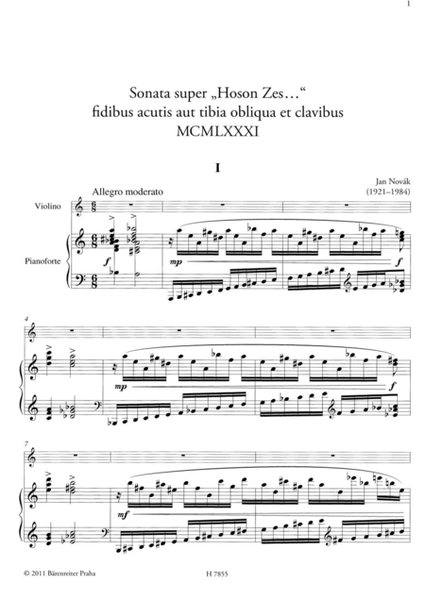Sonata super Hoson zes... for Violin or Flute and Piano
fidibus acutis aut tibia obliqua et clavibus MCMLXXXI
-
Ships in 1 to 2 weeks
Details
Description
SKU: PA.H07855
Fidibus acutis aut tibia obliqua et clavibus MCMLXXXI. Composed by Jan Novak. Edited by Jan Cimár. Stapled. Performance score, Set of parts. With Text Language: Czech/German/English. 48/16/12 pages. Editio Baerenreiter Praha #H07855. Published by Editio Baerenreiter Praha (PA.H07855).ISBN 9790260102118. 31 x 23.7 cm inches.
Jan Novak (1921-1984) is one of the most distinctive phenomena of post-war Czech musical culture. After studying at the Brno Conservatory and the Janacek Academy of Performing Arts, he received a scholarship to study in the USA, where he attended composition classes led by A. Copland. He and Vitezslava Kapralova were the only Czech pupils of Bohuslav Martinu, and he consciously followed in his teacher's footsteps. Sonata super"Hoson zes..."is one of the works written during the final period of the composer's life, which he spent in emigration in Ulm. It bears the typical hallmarks of Novak's musical language - a clear formal plan, a regular structural layout, great motivic inventiveness, graceful melodics and a distinct sense of harmony based primarily on modality and bitonality. The"ideological background"- present in various metamorphoses in each of his compositions, namely Novak's penchant for the culture of Antiquity - is also obvious here (he would frequently use the metre of the Latin text as an underlying component of his compositional technique and almost invariably gave his works Latin titles, since he regarded Latin as a living language with much promise). The basic theme here is the"Song of Seikilos", one of the oldest relics of the music of Antiquity, a written codification of text and musical notation at the same time. Novak originally composed the sonata in 1981 for violin and piano and dedicated it to his friend in emigration, Jiri Trnka, whom he also wrote other violin pieces for. But already in the process of writing the composition he had an arrangement for flute in mind.


 Share
Share